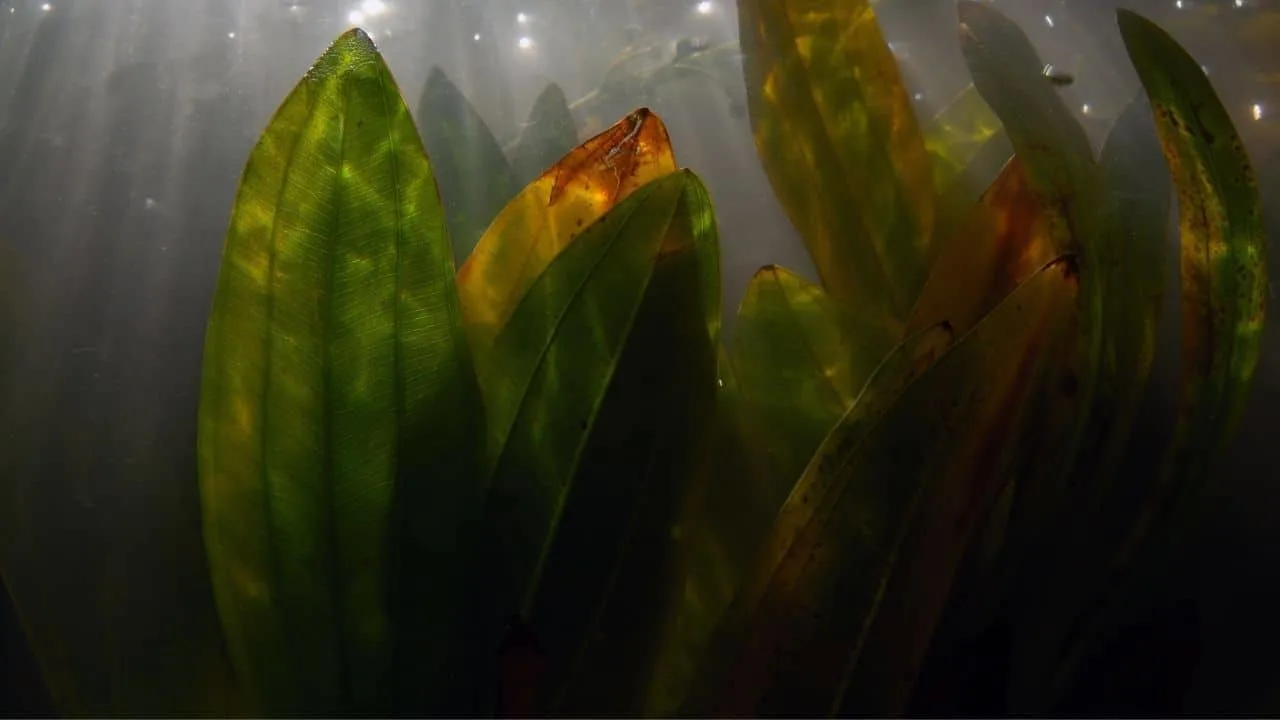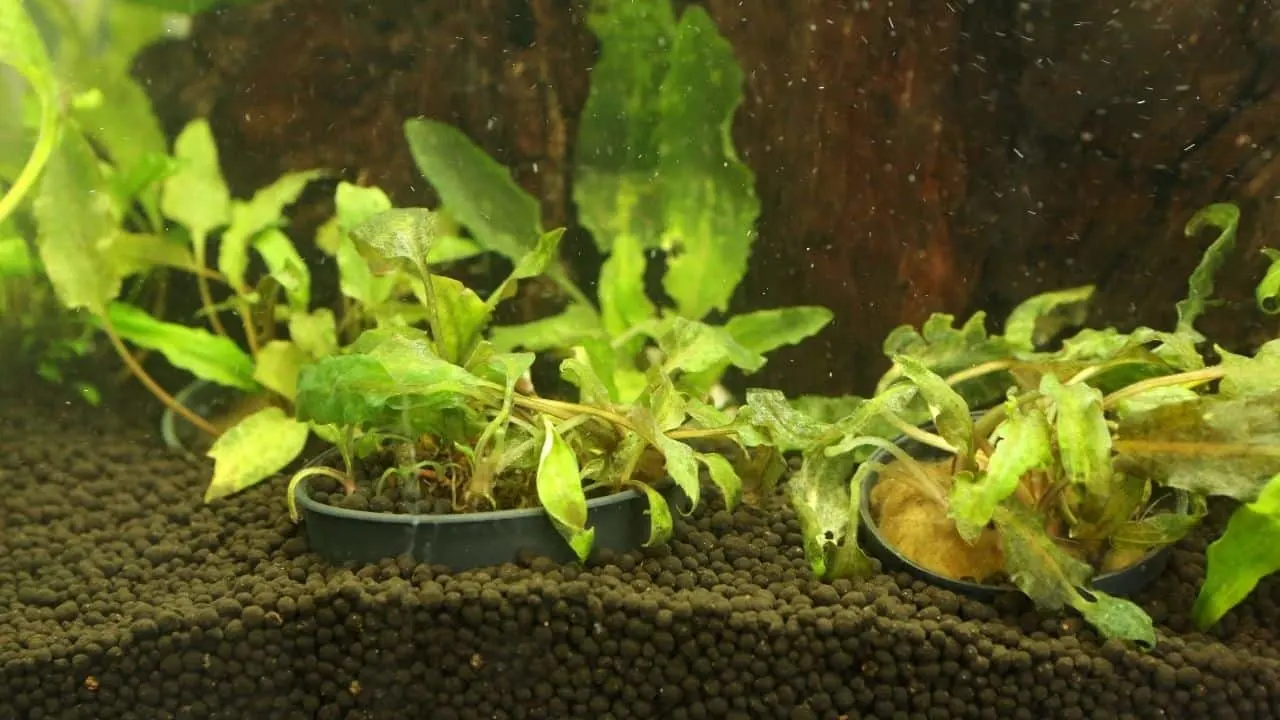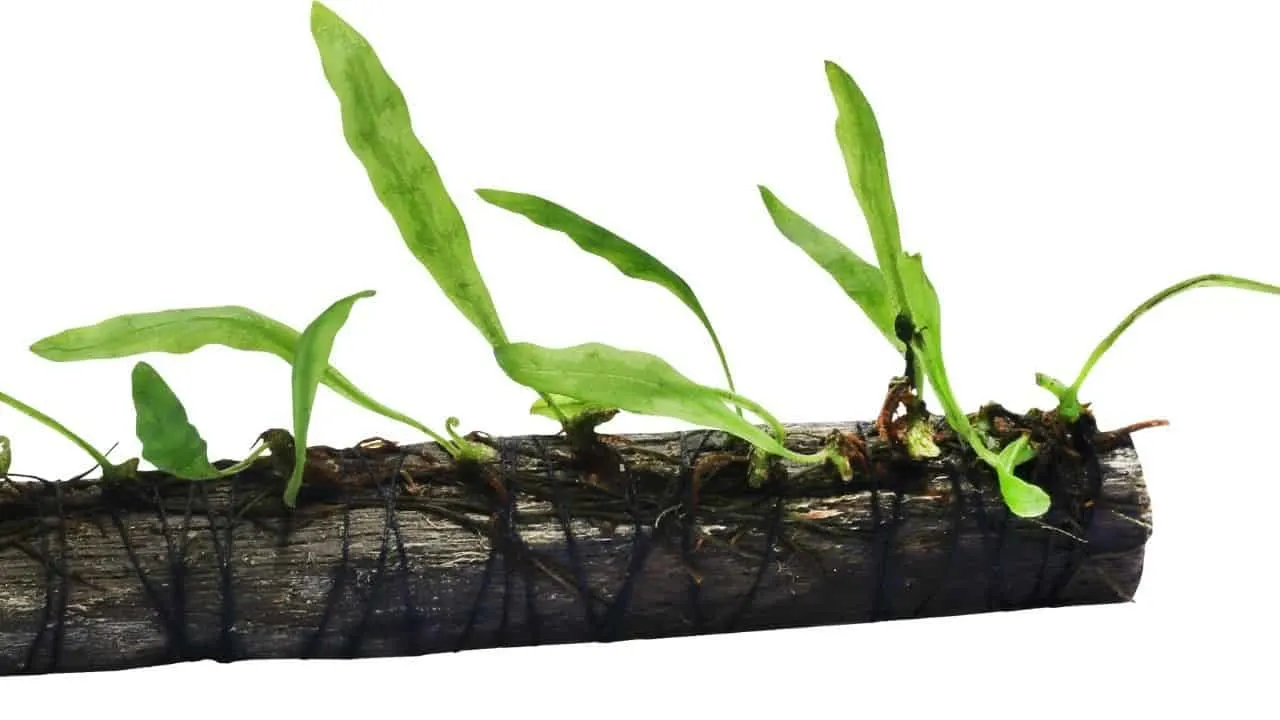Aquarium plants are perfect additions to any tank you have.
They offer a good lot of benefits to the species residing in the tank, including habitat maintenance and oxygen production, in addition to bringing natural beauty to the aquatic environment.
Even in the tank, many aquatic plants help to keep the pH balanced.
Table of Contents
How to Plant Aquarium Plants in Gravel
To plant aquarium plants in gravel, layer your tank’s gravel about three inches above the aquarium floor. Add some fertilizer to the gravel. Fill the aquarium about half full of water. Then carefully place the plants in the gravel. Then cover with the substrate making sure it is above root level.
To make sure your aquarium plants survive and flourish, you will need to follow the instructions below.
Water Conditions
Your water will need to be between 75 and 80 degrees with a pH level of at least 6.5 and no higher than 7.8.
Weekly, change 10% of the water you placed in your aquarium. Maintaining good circulation in the tank is also critical to avoid organic waste accumulation.
Light
The light requirements for your aquarium will be determined by the plants you intend to keep in it as well as the tank’s height.
Aquarium plants require 10-12 hours of light daily on average.
Full-spectrum light with a rating of 6,500K to 8,000K should be used.
It’s vital to remember that light does not quickly enter the water. In tall aquariums, utilize bright light to avoid having to compensate by leaving the light on longer.
The day/night cycle, which is critical for plant growth, will be disrupted if this is done.
Substrate
The substrate in your tank is critical for your aquatic plants’ correct anchoring and root development.
While there are many substrates to pick from, you must be careful to select one that is not harmful to your plants. Medium or fine-grade gravel or coarse sand are the best options.
If you’re looking for a substrate, stay away from ultra-fine sand and coarse gravel. The former lacks aeration, while the latter prevents good anchoring.
It would also be beneficial if you avoided calcium carbonate-based substrates, as they can change the pH of the tank.
But, if you don’t want to use substrates, there are plants that grow in aquariums without a substrate.
Carbon Dioxide
Carbon dioxide is required for photosynthesis, which allows plants to produce their food. This means that for healthy growth, your aquarium plants will require a constant supply of carbon dioxide.
While adding supplementary carbon dioxide to the tank isn’t required for most plants, it has been demonstrated to improve their color, size, and brightness.
Nutrients
Aquatic plants, like land plants, require minerals like manganese, nitrogen, phosphorus, magnesium, and iron to thrive.
To ensure a consistent supply, these minerals must be fed to the tank monthly or in small dosages every few days. This excludes nitrogen and phosphorus, which the plants obtain from fish waste and food.
It’s important to remember that some plants get their nutrition through their roots. Such plants will necessitate the addition of nutrients to the substrate in the form of fertilizer or nutrient-rich clay.
Best Aquarium Plants to Plant in Gravel
Aquarium plants have specific requirements for water, nutrients, and light. Not every plant you put in your aquarium will thrive.
Furthermore, any plants you put into your aquarium will have a huge effect on its ecosystem.
Below are three of my favorite aquarium plants that are easy to care for and look great in the aquarium.
Amazon Sword

This is a fantastic novice plant that won’t give you any trouble. It thrives in a wide temperature ranges and requires modest amounts of light.
Amazon Sword Plant is also beautiful in an aquarium. It has long sword-like leaves that grow in the background of the aquarium or are used as a showpiece if placed in the middle.
Just make sure your tank has enough gravel to allow your plant to root. You want a depth of just under three inches, roughly 2.5 inches. The gravel should always be loosely packed.
In other words, don’t go too deep with your roots. Allow them to expand since they will get rather large!
Also, by introducing additional root tabs on a frequent basis, you can ensure that you’re getting enough nutrients. Do it only once every three months.
Cryptocoryne

Is another preferred plant in gravel-lined aquariums, although it also thrives in sand.
This plant is attractive since it comes in various colors. As a result, you won’t be limited to green plants.
It’s a tough plant that thrives in a variety of water conditions. This plant prefers low light and may thrive in a wide range of pH levels.
Although this is a low-maintenance plant, you should root it as soon as possible.
Gravel is a good substrate for the species because it has enormous root systems. Make sure the root is well-established, and that your tank is well-stocked with gravel.
Three inches at the very least! Root tabs are recommended.
Java Fern

Another excellent choice for beginning plant owners is the Java Fern. Ferns thrive in gravel and only require small amounts of fertilizer to grow.
Many of these can be grown in your tank with very little maintenance.
This is due to Java fern’s ability to adapt to any environment type. They prefer low light levels and may thrive in a variety of climates.
Remove any plant trash and prune this plant. Also, bear in mind that too much light harms the Java Fern.
In terms of gravel, keep the fern’s roots from going too far into the substrate.
How to Feed Gravel Aquarium Plants
Plain gravel, at least when it’s brand new and fresh out of the bag, contains no nutrients for your plants.
Liquid fertilizer is the simplest method, and I use it in all my aquariums. This is something you should add weekly (more frequently is best) to allow your plants to absorb food directly from the water.
Frequently Asked Questions about How to Plant Aquarium Plants in Gravel
How do I get rid of the algae on my plants?
You can wipe it off, but a few algae won’t hurt your plants. In fact, algae are beneficial for aquariums. It provides oxygen in the water and absorbs carbon dioxide.
Conclusion
Gravel plants add a nice touch to your aquarium.
They provide a place for animals to hide, provide more oxygen in the aquarium and help maintain the aquarium’s ecosystem.

Daniel has been a plant enthusiast for over 20 years. He owns hundreds of houseplants and prepares for the chili growing seasons yearly with great anticipation. His favorite plants are plant species in the Araceae family, such as Monstera, Philodendron, and Anthurium. He also loves gardening and is growing hot peppers, tomatoes, and many more vegetables.


